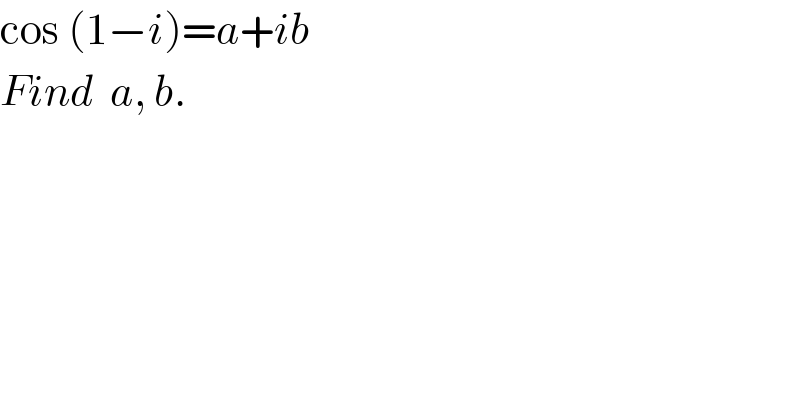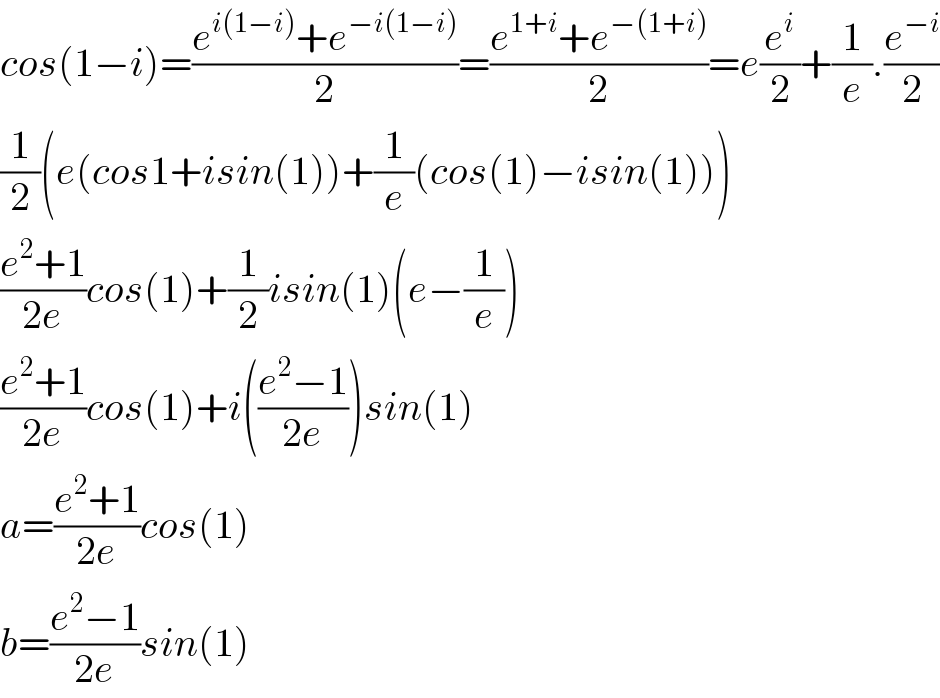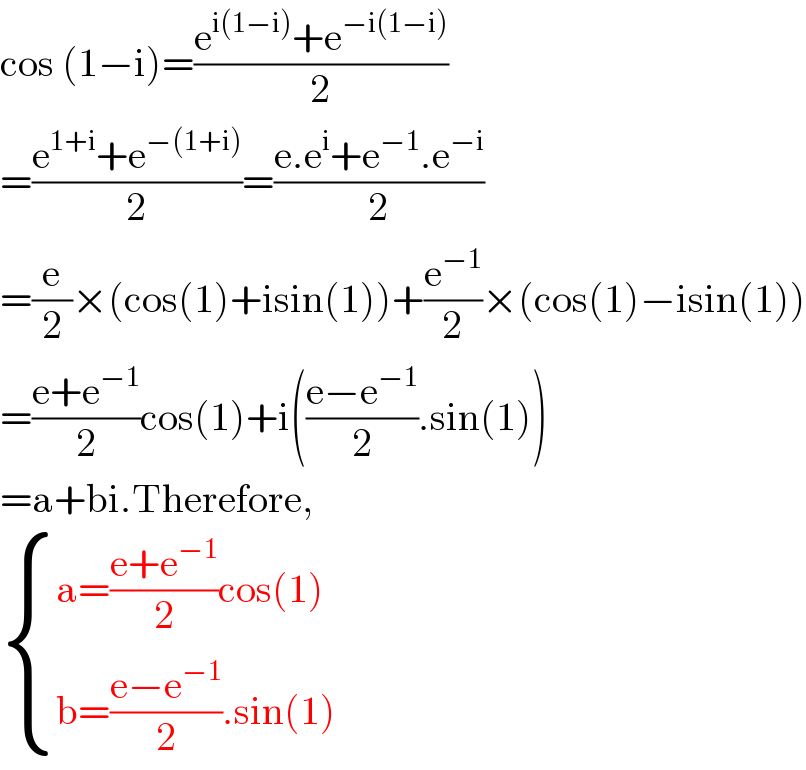
Question and Answers Forum
Question Number 109516 by ajfour last updated on 24/Aug/20

Answered by Dwaipayan Shikari last updated on 24/Aug/20

Commented by ajfour last updated on 24/Aug/20

Answered by 1549442205PVT last updated on 24/Aug/20

Commented by ajfour last updated on 24/Aug/20

Commented by 1549442205PVT last updated on 24/Aug/20

Answered by mathmax by abdo last updated on 24/Aug/20

